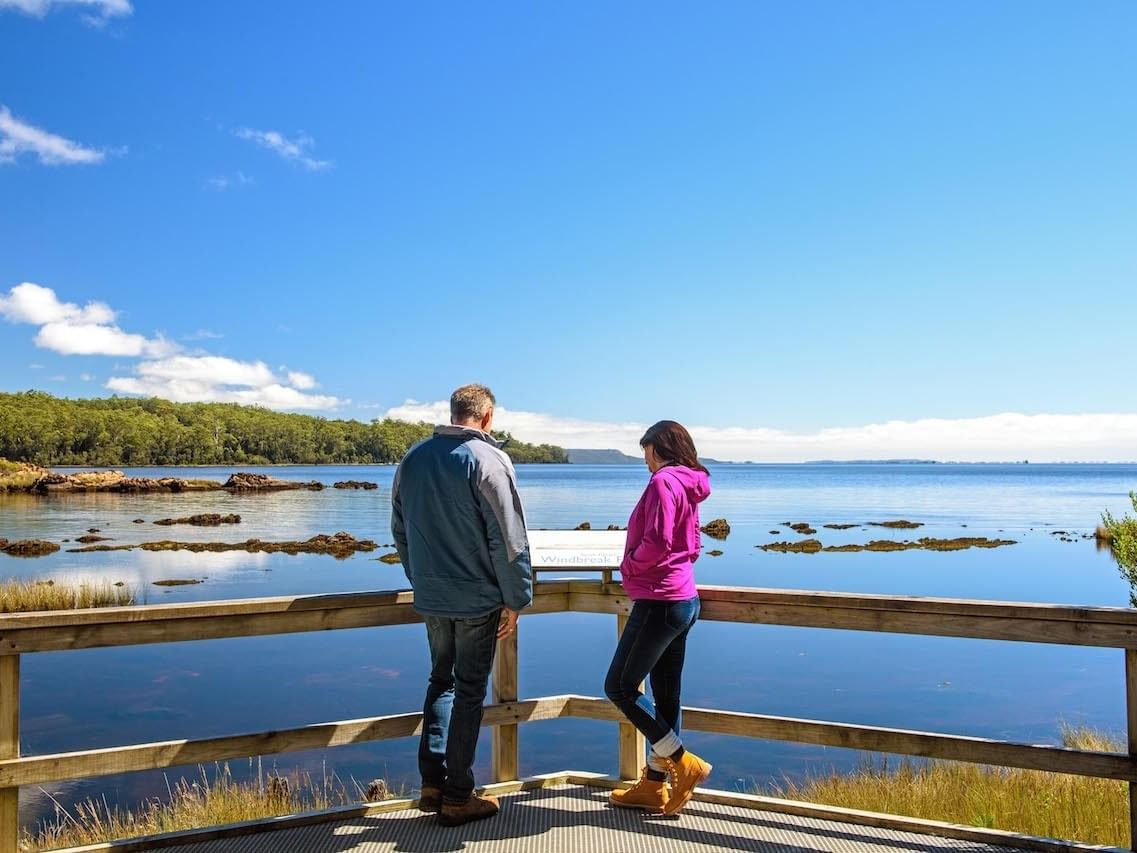Macquarie Harbour
Macquarie Harbour is Australia’s second largest natural harbour, after Port Phillip Bay in Victoria. This vast waterway is six times the size of Sydney Harbour and measures 35 kilometres in length and nine kilometres across. While most parts of Macquarie Harbour are relatively shallow, it is up to 50 metres deep in some places.
Macquarie Harbour is fed by a number of wilderness rivers, including the Gordon and King Rivers, but it drains into the Southern Ocean through the 400 metre-wide narrows at Macquarie Head—a treacherous stretch of water known as Hell’s Gates.
Through the gates of hell
Hells Gates was named in the early 1800s by convicts who made the perilous journey here before being incarcerated in ‘hell’—the notorious penal station at Sarah Island. Hell’s Gates can still be dangerous for mariners, who must navigate an even smaller channel between the western side of the Heads and Entrance Island.
The entrance to Macquarie Harbour is guarded by tiny Bonnet Island, once home to a hardy breed of lighthouse keepers, and now a sanctuary for a colony of little penguins. You can visit Bonnet Island on the twilight Bonnet Island Experience cruise, and watch the penguins return to their burrows at dusk.
Aboriginal history
The land surrounding Macquarie Harbour is the traditional country of the Lowreenne and Mimegin people—two bands of the Tasmanian Aboriginal Toogee tribe. Evidence of this ancient culture dates back more than 35,000 years, and the landscape and rivers around Macquarie Harbour contain many rich archeological sites that tell the story of the area’s original inhabitants. Accounts by early European explorers describe encounters with local Aboriginal people, including eyewitness accounts of people crossing the harbour in canoes made of tea tree bark, lashed together with grass.
Captain James Kelly
The first European to explore Macquarie Harbour was a young adventurer named Captain James Kelly. Kelly was a master mariner, sealer and explorer, who left Hobart on 12 December 1815 and embarked on a 3,000-kilometre circumnavigation of Tasmania. It was during this journey that he became the first European to explore Port Davey and Macquarie Harbour, which he entered on 28th December 1815. Kelly was also the first European to report the existence of Huon pine, a discovery that would significantly influence the decision to establish a penal colony at Sarah Island.
Sarah Island – the Macquarie Harbour Penal Station
Sarah Island was the site of Tasmania’s first penal station—the Macquarie Harbour Penal Station. Established in 1822, the station had a fearsome reputation as a brutal place, reserved for the worst convicts. The men who were incarcerated here endured harsh conditions, ferocious punishments, and long days of hard labour, hauling and cutting the highly prized Huon pine.
Shipping the valuable timber off the island proved difficult, and over time the penal station developed into a thriving shipbuilding site and industrial village. With the arrival of master shipwright David Hoy in 1827, the island entered a period of extraordinary productivity. A total of 113 ships were built here, 80 of which were completed between 1828 and 1832.
The Macquarie Harbour Penal Station was closed in 1833, following the establishment of the Port Arthur penal colony on the Tasman Peninsula. Today Sarah Island is a World Heritage-listed historic site.
You can find out more about Sarah Island by joining the Gordon River Cruise, which includes a guided walking tour of the island, and by attending the live theatre performance The Ship That Never Was, which is staged each evening in Strahan by the Round Earth Theatre Company.

